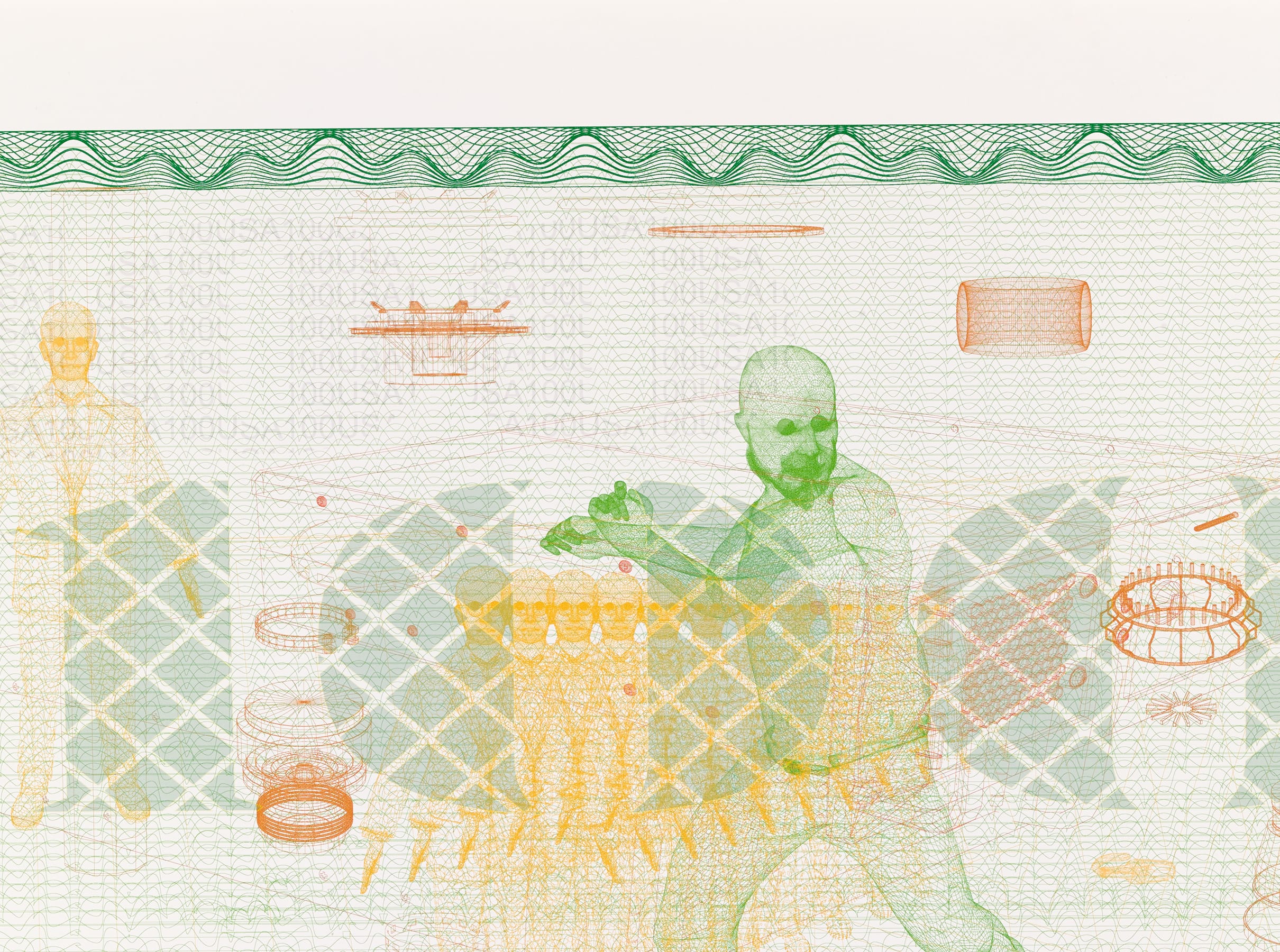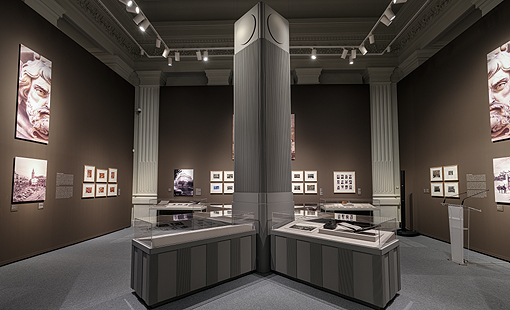
"From Albumen to Pixel" showcases the extensive collection of photographs in the Banco de España's historical archive
On 9 April, a new show opened at the bank's exhibition hall entitled Banco de España Photographic Archive. From Albumen to Pixel. It features 300 photographs from the Banco de España archive, dating from 1869 to the present. The aim of the exhibition is to highlight the archive's role in safeguarding the bank's history and to display certain items in the collection, as part of its commitment to showcasing this rich historical heritage.
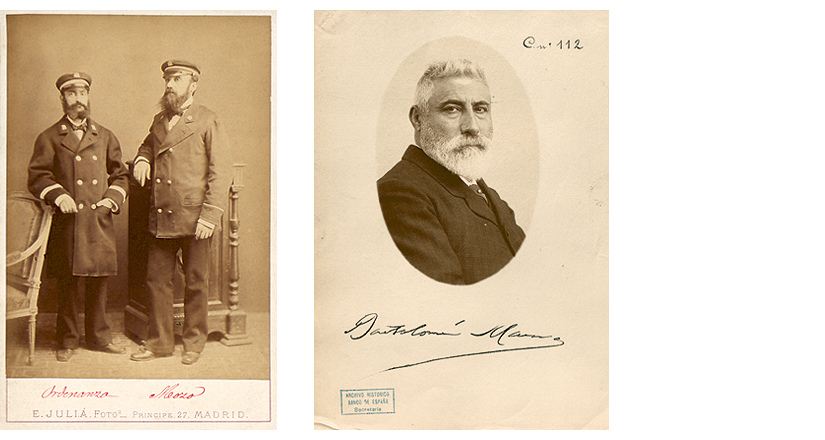 Banco de España clerk and porter. Ca. 1874. Photograph: Eusebio Juliá. Cabinet card. Albumen paper | Bartolomé Maura Montaner, engraver at the banknote printhouse. 1905-1907. Photograph: José Irigoyen Zabaleta. Gelatin silver.
Banco de España clerk and porter. Ca. 1874. Photograph: Eusebio Juliá. Cabinet card. Albumen paper | Bartolomé Maura Montaner, engraver at the banknote printhouse. 1905-1907. Photograph: José Irigoyen Zabaleta. Gelatin silver.
The exhibition is divided into five sections, each covering a different period: Yellow Time (Nineteenth Century); The Photograph as Document (1900-1925); From the Silver Age to the Transition (1925-1975); Spain is Different (1975-2023) and Towards Artificial Intelligence (Twenty-First Century). The three central themes are the portrait as an identifying element, the different spaces of the bank and the institution's activities, allowing for a series of social interpretations and re-interpretations of issues such as urban planning, architecture, public works, people and customs. In short, the show invites us to observe and explore the images in new ways, drawing an understanding of the universal from a contemplation of the particular.
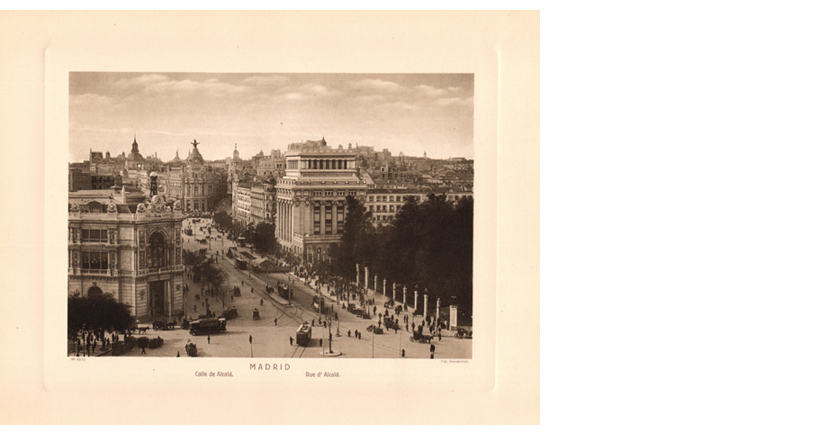 Madrid. Plaza de Cibeles with the Banco de España. 1917. Collotype by Hauser y Menet. Photograph: Otto Wunderlich.
Madrid. Plaza de Cibeles with the Banco de España. 1917. Collotype by Hauser y Menet. Photograph: Otto Wunderlich.
The exhibition includes an extensive selection of photographs of Banco de España's central and branch offices in Madrid and elsewhere, taken between 1882 and 2023. They document developments in the architecture, showing the way the bank buildings and their urban surroundings evolved over time and reflecting transformations in everyday life in cities across Spain. A photo essay published by Madrid studio J. Laurent & Cía. in 1891 to mark the opening of the building on Calle Alcalá is of particular interest. The archive contains some particularly fine albums, including one of the Bilbao branch produced in 1923, which shows the recently opened building on Gran Via Don Diego Lopez de Haro. The two albums of the bank's Barcelona buildings are also outstanding — one of the branch on Via Layetana, with photographs taken by Puig Farran in 1932, and a superb photo essay by Carlos Pérez de Rozas, featuring the new building on Plaza de Cataluña in 1955. There are also pictures of the complex work involved in building the underground chamber housing the bank's gold reserves and of the ruins of the Teruel branch following Civil War air raids, as well as a diverse set of pictures of different offices over the years, including the branches in Burgos, Avila, Almeria, Toledo, Palma de Mallorca, Vigo, Seville and Larache (Morocco), to name but a few.
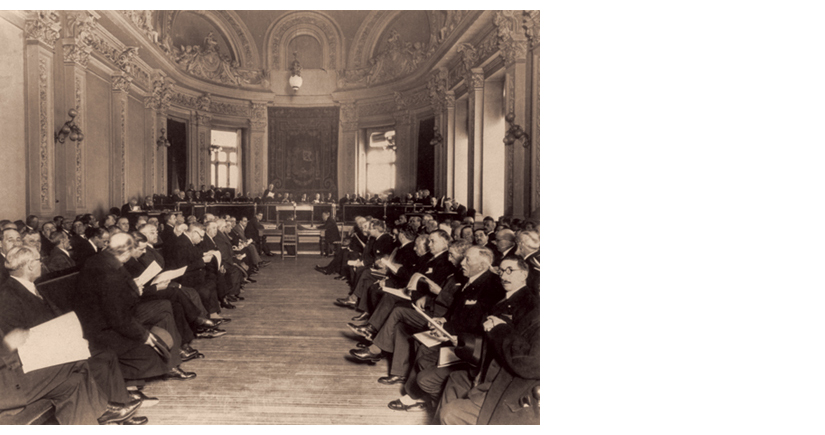 Banco de España. General Meeting of Shareholders. 1934. Photograph: Cristóbal Portillo Robles. Gelatin silver.
Banco de España. General Meeting of Shareholders. 1934. Photograph: Cristóbal Portillo Robles. Gelatin silver.
The exhibition also includes a large section featuring portraits of bank employees, taken between 1874 and the late 1940s. This fine selection of highly evocative pictures shows the development of the photographic portrait, changes in employment, the composition of the workforce, aesthetic traits and other aspects of socio-cultural interest. Some of these portraits are by leading photographers of the time, such as Eusebio Juliá, Cristóbal Portillo, Venancio Gombau, Leopoldo Savignac, Orestes Calvet and Manuel Torres Molina.
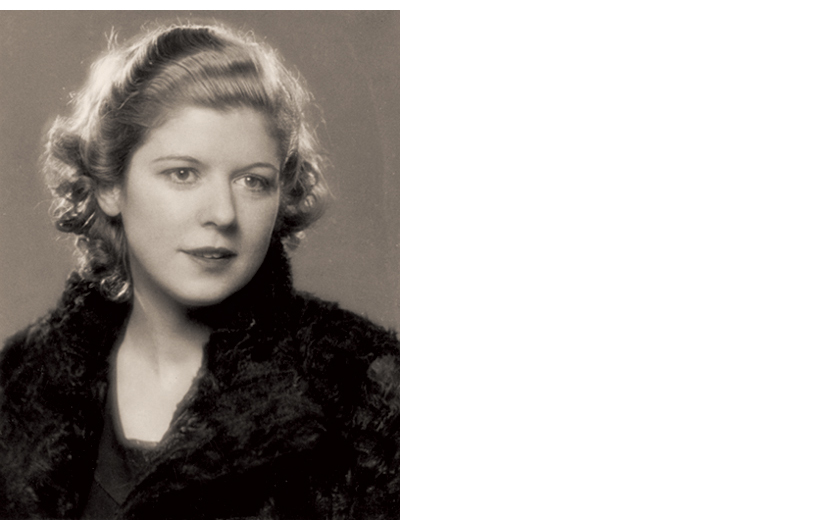 Teresa Yuste y Valdés, temporary auxiliary worker from Madrid. 1939. Photograph: Amer. Gelatin silver.
Teresa Yuste y Valdés, temporary auxiliary worker from Madrid. 1939. Photograph: Amer. Gelatin silver.
The set of photos of public events at the Banco de España begins with one of the few surviving pictures of a shareholders' meeting taken in 1934. This section also includes a wide selection of other events in the country's economic and political life. They include meetings of the board of governors, official visits by Spanish and foreign leaders, anniversaries and others. The pictures span a period that begins during the Second Republic, traverses the Franco dictatorship and the period of economic isolation, the 1959 stabilisation plan and the new opening-up to the outside world with the consequent economic growth of the 1960s, the restoration of democracy, membership of the European Community, introduction of the euro and the bank's latest steps in areas of financial education and gender equality.
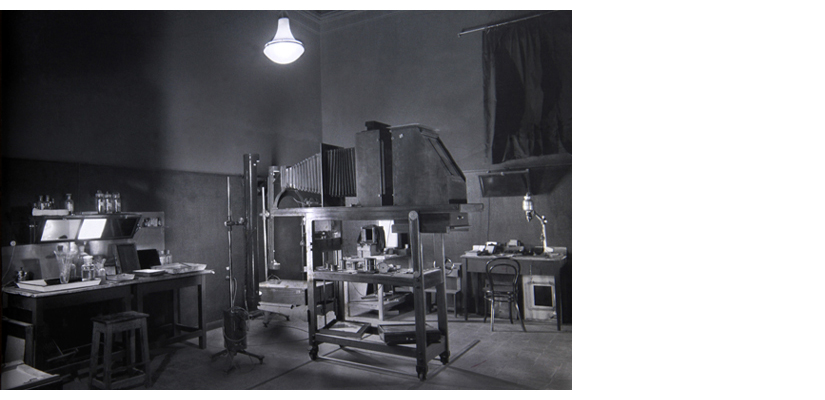 Banco de España photographic laboratory, Madrid. Ca. 1940. Photograph: Ragel. Gelatin silver.
Banco de España photographic laboratory, Madrid. Ca. 1940. Photograph: Ragel. Gelatin silver.
A catalogue, entitled Archivo Fotográfico Banco de España. 1874-2023 has been published to coincide with the exhibition. Covering 150 years of Spanish and Banco de España history, it is available on paper and online![]() and contains more than 500 photographs by over 120 different photographers. It showcases almost ten year's work by the Banco de España's historical archive to retrieve and catalogue the bank's photographic collection. The publication features an introduction by Elena Serrano and Patricia Alonso and three separate chapters on architecture, employee portraits and public events, with texts by specialists in the respective fields.
and contains more than 500 photographs by over 120 different photographers. It showcases almost ten year's work by the Banco de España's historical archive to retrieve and catalogue the bank's photographic collection. The publication features an introduction by Elena Serrano and Patricia Alonso and three separate chapters on architecture, employee portraits and public events, with texts by specialists in the respective fields.
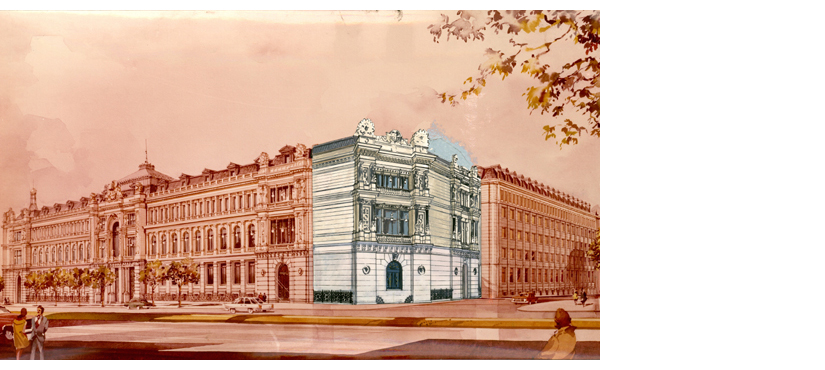 Madrid. Banco de España. Competition for designs of the building on Calle Alcalá and Calle Marqués de Cubas. Submission by Rafael Moneo Vallés. 1979. Photograph: Altair Photo (Madrid). Chromogenic print.
Madrid. Banco de España. Competition for designs of the building on Calle Alcalá and Calle Marqués de Cubas. Submission by Rafael Moneo Vallés. 1979. Photograph: Altair Photo (Madrid). Chromogenic print.
The first chapter, entitled El Banco de España en la ciudad [The Banco de España in the City], has an introduction by recently-deceased Pedro Navascués Palacio, professor, historian of architecture and member of the Royal Academy of Fine Arts of San Fernando. The second chapter, Los rostros del Banco de España [Faces of the Banco de España], begins with a text by photo historian and member of the Royal Academy of Fine Arts of San Fernando, Publio López Mondéjar. The third chapter, entitled El Banco de España y la economía [The Banco de España and the Economy], deals with the more public face of the bank and includes a piece by María Ángeles Pons Brías, professor in economic history at the University of Valencia.
This essential publication includes many previously unpublished photographs, offering a view in pictures of the centuries-old institution and reflecting the history, architecture, political and economic evolution and socio-cultural changes not only of the bank, but of Spain more widely.
The exhibition and the catalogue together explore the essential values of photography, in terms of both the subject-matter and structure, the message and its medium. Any photograph is a residue of the past and, by extension, a key source for historical study.
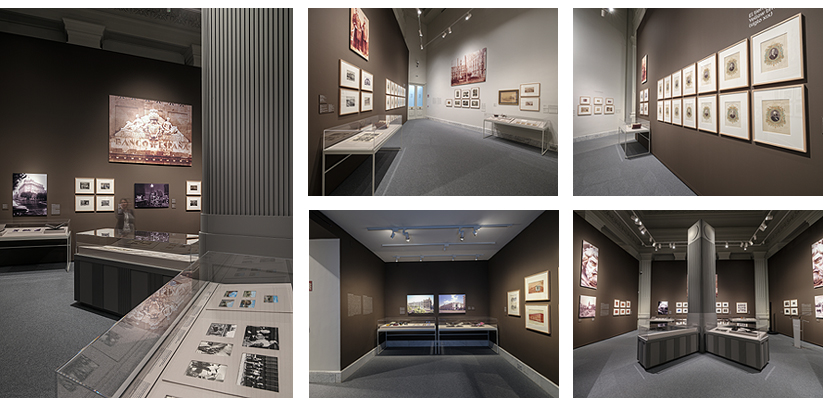 Exhibition: Photographic Archive. Banco de España. From Albumen to Pixel. (Banco de España Exhibition Hall, April 8, 2024 - July 20, 2024). Photos by Juan Carlos Quindós de la Fuente.
Exhibition: Photographic Archive. Banco de España. From Albumen to Pixel. (Banco de España Exhibition Hall, April 8, 2024 - July 20, 2024). Photos by Juan Carlos Quindós de la Fuente.
